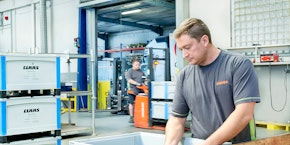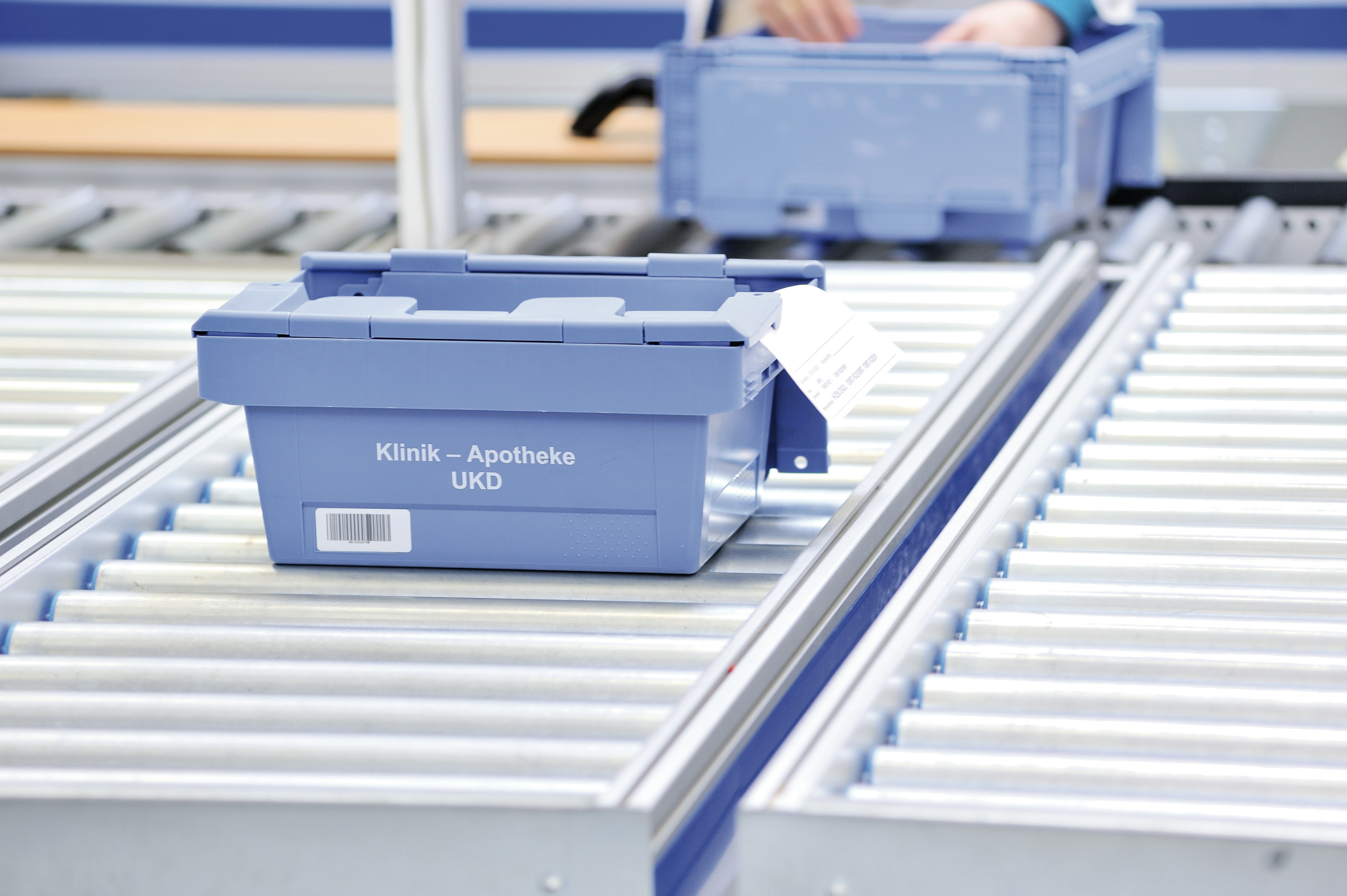What is production logistics?

According to the Gabler business dictionary, "Production logistics characterises the phase between procurement logistics and distribution logistics. Production logistics can be understood as the planning, control and execution of the transport and storage of raw materials, auxiliary materials, operating materials, purchased parts, spare parts, semi-finished and finished products and the associated supporting activities within a company's production system." (1) The purpose of production logistics is to ensure a smooth and optimal flow of items from the raw materials warehouse, through production and onto the finished goods warehouse. In general, production logistics should reduce the production leadtime – ie, the time from the creation of a work order to the completion of the product. The terms production logistics and intralogistics (internal logistics) are sometimes used synonymously.
Numerous influencing factors and major change
Production logistics and in-house processes are undergoing major changes. Technological influences, such as Industry 4.0, and economic factors, including increasing globalisation, are having a strong impact. Customers are increasingly asking for ‘batch size 1’ – ie, customised production. This creates highly complex intralogistics, or production logistics, operations that need to be digitalised, automated and networked. This is made possible with new production methods, such as rapid prototyping or additive laser manufacturing. And through Industry 4.0, all systems are networked, allowing them to communicate with each other.
Customised one-off production will have an impact on both production and distribution logistics because many different parts will need to be supplied to individual stations in a Just-In-Time (JIT) fashion throughout the entire production process. The supply of parts, semi-finished products and raw materials to the machines, will therefore need to be both flexible and automated. Scalable warehouse shuttle systems working in combination with Automated Guided Vehicles (AGVs) are ideal here. Batch size 1 production also sees the use of flexible ‘agile manufacturing cells’ that can be quickly switched to make another product. This however poses its own intralogistics challenge, as they have to react just as quickly to changes in production. To achieve this quick reaction, the systems need to be able to communicate with each other via the Internet of Things (IoT).
The demands on production logistics
Production logistics will encompass a variety of tasks. One example being before building a plant, the right location must be determined so the procurement processes and flow of materials can be designed to be as efficient as possible throughout the plant’s future.
In an existing plant, processes for production, in addition to transport and storage, must be designed and executed as optimally and efficiently as possible. These logistics processes are controlled by a Material Flow Computer (MFC), which receives transport orders from higher-level systems such as merchandise management systems, warehouse management systems and production planning systems (2). The MFC takes over the control of the conveyor technology – whether they are continuous units, such as overhead conveyors and conveyor belts, or discontinuous, such as AGVs and storage and retrieval machines.
Modern material flow computers often offer additional functions beyond the control of transport processes, logistics and warehouse and conveyor technology. These include strategies and route calculations for optimal material flow, the prevention of congestion and the bypassing of unauthorised access areas. They will also allow the entire material flow to be visualised. In the smart factory of the future, artificial intelligence (AI) will manage warehouse and replenishment operations; autonomous transport systems, such as AGVs and tugger trains, will move components and materials between A to B; conveyor belts and machines will be loaded by robots (3); and, as mentioned previously, all systems will be networked, communicating via the IoT.
Production logistics must be able to precisely determine demand arising in the production process for materials, semi-finished products, components, operating materials, etc. Last but not least, planning of stocks will be necessary to, for example, compensate for seasonal fluctuations (4).
Which systems are used?
Intralogistics or production processes are created using storage systems, transport systems and loading aids, tracking systems for transport vehicles, placement systems for machines, picking systems, identification systems for parts such as RFID, as well as IT systems for planning, controlling and monitoring the flow of materials and information.
System solutions for production logistics
As a storage technology expert, BITO develops complete storage systems for production and internal logistics. Everything from shelving to multi-level systems to flow-through picking racks can be implemented. Automated shelving, order picking systems and container solutions are also part of the company’s portfolio, which means that BITO can help with any automation issue that may occur in intra- and production logistics.
AGVs are increasingly being used to connect individual production, assembly or order picking areas and the automation of material transport. With the LEO Locative (5) and its supporting LEO stations, BITO offers a particularly innovative and low-cost system that does not require wi-fi or a material flow computer. The LEO is controlled via an optical track and markers (for stop and destination instruction) attached to the floor. The entire plug and play system is easily scalable thanks to ability of the optical tracking to be quickly adapted to new requirements. Optional decentralised guidance via a tablet gives control over different LEO stations. The AGV solution can lead to an enormous saving in walking distances and improves the ergonomics of individual workplaces, while maintaining efficient materials flow.
Literature:
1 Production logistics, Definition: What is "production logistics"?, Gabler Wirtschaftslexikon, Link
2 Material flow computer, Wikipedia, Link
3 Meitinger Therese, Production logistics and Industry 4.0: Man and machine in harmony, Logistik Heute, July 2019, Link
4 BITO expertise, Managing fluctuations in demand and supply, link
5 LEO Locative - The Driverless Transport System, Link

